Features
“Antisemitism from the Crusades to the Holocaust”
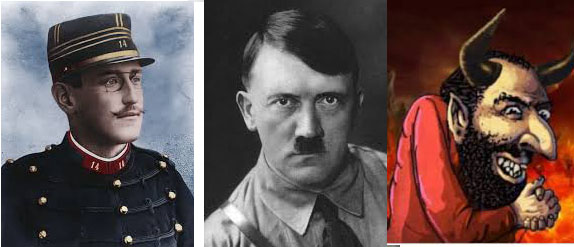
Presented by LIONEL STEIMAN at the Lanny Remis Speakers Forum, May 8, 2025.

One of the questions I wanted to answer in my course on the history of antisemitism was why culturally assimilated European Jews seemed blind to the rising tide of antisemitism during the years in which they had grown up? Of course they didn’t have the benefit of hindsight. They knew of the pogroms, of course, but they were in Russia, not in such sophisticated centres like Vienna, Prague, and Berlin, cities to which Jews from the east had flocked by the thousands, taking advantage of the opportunities offered during the rapid industrialization of the later nineteenth century. In Vienna they would eventually become the propertied and educated elites of the upper middle class. What they underestimated was the danger they faced from masses prone to the appeals of antisemitic demagogues.
The reason was that these Jews were the beneficiaries of what was called “Jewish emancipation,” the removal of age-old restrictions on Jews that had limited what they could do, where they could live, and much more. Emancipation facilitated the admission of Jews to society on terms of equality with other citizens. They were granted the right to vote, freedom of movement, access to education, and other areas from which they had been barred. France was the first country in Europe to emancipate its Jewish population, which it did during the French Revolution. Subsequently, the process of ‘Emancipation’ was launched everywhere in Europe except the Russian Empire, and by the later 19th century was relatively complete.
Emancipation had been the product of the so-called Enlightenment, when philosophers and rulers got the bright idea that Jews, whom they had regarded as scarcely human, would stop being Jews if only they were given an opportunity to be like everyone else. If they were given freedom, the right to vote, and access to other occupations than peddling and money-lending they would lose the negative characteristics associated with Jews. This Jewish ‘character’ was not considered a matter of ‘race’ or ‘blood’, but was seen as a product of the environment in which Jews were forced to live. But behind these novel ideas lay centuries of popular hatred and prejudice rooted in religion and superstition.
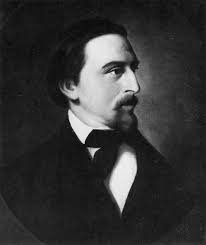
So it was almost inevitable that there would be a popular reaction against the emancipation of Jews, and attempts made to roll it back. Jewish entry into areas in which they’d never before been seen made people uneasy, to say the least. And because Jews in western Europe were abandoning their distinctive dress and manner, thus assimilating and becoming indistinguishable from non-Jews, their presence came to be feared all the more. Opponents of emancipation demanded the re-imposition of restraints and restrictions on Jews, many of which dated back centuries. They organized and gave themselves a name intended to distinguish themselves from the religious bigots they scorned. Their “The League of Antisemites”, was founded in 1878 by a journalist by the name of Wilhelm Marr.
The word ‘Antisemite’ was a totally new, totally invented word. But it had a scientific ring to it, as did so much else in this age of scientific progress. Antisemitism dissociated itself from the age-old anti-Jewish prejudices rooted in religion and legend, claiming instead to have a basis in science. The word ‘Semite’ was taken from the field of philology and referred to a grouping of languages, though soon it was referring to a category of people as well. And since Jews were the only “Semites” in Europe, it was they whom anti-Semites opposed. Soon, inflammatory antisemitic publicists and their products proliferated in various countries, most especially in France and Germany, the countries where ‘Emancipation’ had proceeded furthest, and needed to be rolled back. Meanwhile, beneficiaries of Emancipation dismissed antisemitism as a matter for the gutter, or for cynical politicians
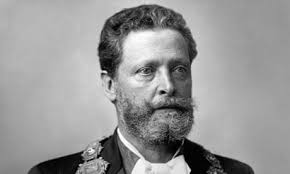
The most prominent politician to exploit antisemitism before Hitler was Karl Lueger, the famous mayor of Vienna, who used it to woo the masses. During his tenure from 1897 to 1910, Vienna became the most advanced city in the world: public facilities such as gasworks, public transit, and housing were unmatched anywhere else. And nowhere else in Europe did Jews feel more secure. Lueger was a charming man; with Jewish friends, he was often seen attending Jewish marriages and bar mitzvahs. When the contradiction was pointed out, he replied, “I decide who’s a Jew.” Antisemitism was socially acceptable and taken for granted everywhere. After all, compared to Jews in Russia, with regular pogroms claiming hundreds of lives, Jews in Vienna, Prague, Paris, or Berlin were safe and could relax. They would never have dreamed of joining the hundreds of thousands of Jews fleeing Russia for America every year. In fact, they scorned them, and their Yiddish, which they regarded as a “jargon and not a language at all.
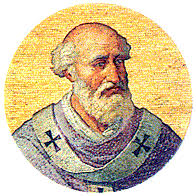
Nothing remotely like the Russian pogroms had occurred in the West since the First Crusade of 1095. Prior to that, the Jews of Europe had enjoyed relative peace and security. And because their value as physicians, merchants, and scholars were prized by rulers, Jews often enjoyed privileges later denied them. So why had everything changed in 1095, with the launch of the first Crusade, the armed campaign to secure recapture the Holy Land from Islam? When Pope Urban II proclaimed the Crusade he made clear there was no act more deserving of heavenly reward than to die on Crusade: to do so was assurance of immediate salvation. But when the first crusaders set out for the Holy Land, they asked themselves: “Why are we going all the way to the Jerusalem to defeat Christ’s Muslim enemies when the Jews who murdered him are right here among us?” So as the armies of French Knights set out for the East, they plundered and massacred age-old Jewish communities en route, and even made significant detours to do so. Some of the Jewish victims believed their suffering heralded the coming of the Messiah. Others thought the Pope had promised a blanket pardon to anyone who killed a Jew. Jews could save themselves by becoming Christian, and some were offered baptism. Such conversions were rare. Far more common was mass ritual suicide, or “Kiddush ha-Shem”, sanctification of the divine name.
Within a century, popular pressures moved the Pope to decide to legislate that Jews everywhere be required to wear some distinguishing mark. Specifics were left to individual countries. France required Jews to wear a yellow patch on their cloaks; Germany required a yellow, cone-shaped hat. To this day, ‘yellow’ has negative connotations, notably that of cowardice. The year of this legislation was 1215: from that point on, Jews are seldom depicted without such insignia, whether in art, sculpture, or other illustrations. This began a process that continued for centuries: the separation of the ‘image’ of the Jew from their human reality. The very word ‘Jew’ became a synonym for various undesirable qualities, triggering repugnance by its very mention.
This separation of the ‘image’ from the individual allowed Jew-hatred to flourish in the absence of Jewish people. In the mid-1970s a student of mine from Sioux Lookout told me that before he came to Winnipeg he thought that “Jew” was simply a word for crooked bargaining. The boy was himself no anti-Semite; he seemed totally open-minded, and eager to learn. I found that people with Jewish friends or a Jewish doctor or other professional could still hold antisemitic views simply because their prejudices were independent of their lived experience. A colleague from a town in the north of England told me that folks there seemed to have three categories of Jews: there were “powerful international Jewish financiers”; there were the Jews in the Bible- the “Israelites”; and there were Jewish shopkeepers, who were well liked but who didn’t affect their prejudices about “the Jews.”
Where did all this begin, this separation of “Jews” from the individual human beings they really were? We have to go back to the very beginning of Christianity, which began as a radical messianic sect of Jews, whose leader, a young rabbi called Jesus, was tried and executed by a Roman court under the authority of the Roman Governor. His followers believed he was the “Messiah” who would transform Israel. Their foremost missionary was Saul of Tarsus, much later known as St. Paul. Although Saul’s original mission was to persecute the followers of Jesus, he underwent a conversion “on the road to Damascus” and joined them. Paul’s sermons and letters became central books in what eventually became the New Testament. Because Greek was the common language of the eastern Mediterranean world, Saul became Paul, and “Messiah” became ‘Christos’. Soon Christians and Jews became ever deeper entrenched in an antagonistic relationship. Christians couldn’t understand why Jews refused to recognize the truth and accept Christ. Either they must be blind, or stupid. Since obviously they were neither, they must be evil. And so in the New Testament’s book of John they are “sons of the devil” and bound to do his work. (John 8:14) During the Holocaust, some people cited the passage from Matthew in which the Jews implicitly confess their guilt for the death of Christ: “His blood be upon us and our children” (Matthew 27:25).
Throughout the centuries that followed, Jews were depicted in various art forms as devil-like creatures, with horns and tails and cloven feet. Sculptures on churches and public places showed Jews with blindfolds signifying they were blind to truth. A particularly popular motif was the so-called “Judensau”, which depicted a rabbi lifting the tail of a huge pig to look for his Talmud, while other Jews gathered beneath the pig to suckle. Variations of the “Judensau” can still be found sculpted in public places in Europe. Then there was the so-called “foetor judaicus.”, the innate stench of the Jewish body. And it only got worse.

The Church Fathers who laid the theological and pastoral foundations of Christianity defined Jews as a threat to the moral and political foundations of Christendom, just as they were a threat to the soul of every individual Christian. Some Church Fathers accused Jews of killing Christ, thus making all Jews thereafter guilty of the crime of “Deicide”, killing God! Scores of other accusations against Jews proliferated. The logic was simple: for if you would kill the Savior, what else wouldn’t you do? Soon Jews were being accused of all manner of outlandish crimes: spreading plague by poisoning wells; killing Jewish children to use their blood in baking matzoh; and even drinking Jewish blood in their rituals. If you would believe what was patently impossible- since drinking blood was taboo for Jews, what wouldn’t you believe? And thus, reasoned one prominent historian of antisemitism, the road to Auschwitz was begun over a thousand years ago.
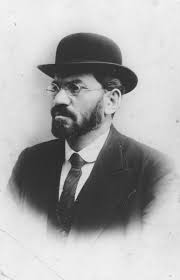
Incidentally, the last “blood libel” trial was held in Kiev (then in the Russian Empire) Russia in 1913. The verdict was ambiguous: yes, the crime had indeed been committed, but the accused, Mendel Beilis, was not the murderer. Although both sides could claim victory, the trial helped perpetuate the myth of ritual murder: the killing of a Jewish child to use its blood to bake matzoh.
But if the “road to Auschwitz” was begun a thousand years ago, why wasn’t the attempt to exterminate Jewry also begun a thousand years ago? After all, in the 4th century C.E. Christianity became the official religion of the Roman Empire; the Romans made life difficult for Jews but made no attempt to kill them all. Why not? The answer lies with the greatest of the Church Fathers, St. Augustine (354-430). It is true, he wrote, that the Jews are guilty of the crime of Deicide, of killing the Savior. So they should be persecuted, but not too much; and they must be made to suffer, but not too much. And they should not live near Christians. Their suffering and eternal “wandering” would be proof of their guilt; and they would be living (if unwilling) witnesses to the truth of the Christian faith. This idea was repeated in variations by subsequent Popes, who in any case held out the possibility that Jews could avoid all this by converting. The Jewish communities of Europe, despite some ups and downs, were able to live relatively peaceful lives. Theirs was not an unbroken tale of suffering. But the myths, legends, and lies about them remained.
The attack on this hateful tradition began in the 18th century, the age of Enlightenment. The absurd notions of Jews having horns or drinking Christian blood now seemed out of place. Philosophers and intellectuals attacked all manner of superstitions including those that appeared to support Christianity. In attacking the Church these thinkers also attacked its beliefs that justified Jew-hatred. The further decline of religion in subsequent centuries occasioned by the rising prestige of science might have resulted in a decline of anti-Jewish prejudice, but instead the whole cluster of prejudice and superstition only found a more secure foundation in science.
Of course the word ‘science’ here must be qualified, for in the 19th and even part of the 20th centuries “science” included craniology, physiognomy, and eugenics. Today they are regarded as pseudo-sciences and historical curiosities, but prior to World War II they enjoyed a respect like that accorded to physics or any other exact science. Everywhere, “race” was accepted as a valid category for defining human groups, though its analytical usefulness was increasingly questioned until the term itself was discarded. By the 1880s Europe had completed its ranking of the world’s so-called “races” along a sliding scale. White, northern Europeans topped the list, which ranked other inhabitants according to skin colour, head-shape, physiognomy, and other physical characteristics, all of which were believed to denote the intellectual and moral qualities indicating a group’s level of ‘civilization. So where did Jews fit in? At first they were ranked simply as a sub-group of Europeans; one theory even had them at the apex of the white race; but antisemites attempted to find a scientific basis for excluding them. Since the Middle Ages, as was pointed out, Jews were believed to have a distinctly unpleasant odor, so there must be a scientific basis for it; but none was found. Researchers fanned out over Europe measuring skulls, noses, and other physical features thought to distinguish Jews from other white people. Was there a typical ‘Jewish nose’? One survey found the so-called Jewish nose was most prevalent in the Polish nobility. Research found no support for the popular belief that Jews were dark while gentiles were fair. Regional variations were such that many different ‘races existed within any given country. Wider research showed that Jews tended to resemble the populations in whose midst they resided.
In today’s “post-Truth” era we know too well that dangerous beliefs can persist despite overwhelming evidence against them. This is what happened with the cluster of beliefs encompassed in the term ‘antisemitism.’. The failure of science to support antisemitism or the notion of “race” did not stop people from believing that it did. Others recognized that science could provide little support to prejudice, so antisemites shifted their ground again: the essence of race, they argued, was in the blood—not in its physical elements but in elements which could not be measured, and whose power was therefore all the greater. By thus elevating ‘race’ to the level of ‘mystery’ late 19th century racists were merging prejudices based on religion with the emerging force of nationalism based on “race.” To the ancient belief that Jews were the enemies of Christ was added the modern belief that they posed a threat to the nation. Thus religious and racial antisemitism were strengthened by the most powerful political force ever to emerge, modern nationalism. And because Jews were a threat to race, which was the biological foundation of the nation, they were enemies of the state.
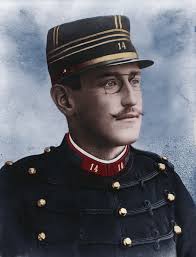
The political force of this antisemitism showed itself in 1897 with the election of Karl Lueger as mayor of Vienna, who was mentioned earlier. The antisemitism that was such a powerful force in central Europe also ignited the worst political crisis in France since the French Revolution, the Dreyfus Affair. Raging at the very time Lueger was making Vienna the most advanced city in Europe, the Dreyfus Affair threatened to destroy the French Republic. Spreading far beyond the issue of the guilt or innocence of Alfred Dreyfus, the Jewish officer charged with treason, it polarized the nation between supporters of the Republic, and those who would restore the pillars of the old order: Monarchy, Church, and Aristocracy.
With the spread of industrialism and its threat to agrarian and village life, there was a heightened urgency to demands that the influence of Jews be curbed. The prominent role of Jews in finance capital and speculation earned them blame for the scandals and crashes that dogged the era. Jewish prominence in the free professions of medicine, law, journalism and publishing all increased Jewish vulnerability to various charges of malfeasance. Add to this the persistence of the blood libel, and public depiction of Jews as pigs, goats, and devils; the stereotypes of greedy, conniving Jews proliferating in literature and fairy tales everywhere—the list goes on and on. The reality is that antisemitism had come to permeate the intellectual and cultural life of Europe. Its assumptions were widely shared across the political spectrum; general distaste for Jews was fashionable in high society; blatant antisemitism was articulated at all levels of culture, and freely expressed from church pulpits and in parliaments- including those of Canada.
But what was it about antisemitism in Germany that made the country ripe for a rabidly obsessive anti-Semite like Adolf Hitler? Israel’s most respected Holocaust historian once commented: “If people had been told in 1914 that within one generation most of the Jews of Europe would be murdered, their answer would most certainly have been: The French are capable of any crime.” The reason for this comment was that France was by far the most prolific producer and disseminator of antisemitic literature, purveyed by some of its most respected writers and intellectuals across the political spectrum; it was the home of repeated outbursts of vicious Jew-hatred, most notorious of which was the Dreyfus Affair, the likes of which had never been seen in Germany. The name Edouard-Adolphe Drumont (1844-1917) is synonymous with French antisemitism. In 1886 he published La France Juive. Its Index listed not only prominent Jews but all prominent figures having anything to do with Jews, implicating thousands in what many already believed was an inevitable national degeneration. Drumont provided a list of “hidden Jews” who had been masquerading as Frenchmen. Since antisemitism permeated every element of French culture and politics, there was no need for a specifically anti-Semitic party or movement. Antisemitism was simply a constant in culture and society.
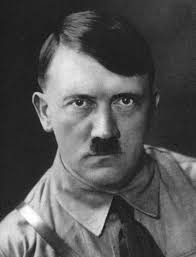
Germany was considered the safest country in Europe for Jews, and although antisemitism was certainly widespread, it hadn’t occasioned significant violence there since the revolutionary upheavals of 1848. So what happened? Why was the Holocaust “Made in Germany”? The answer is Adolf Hitler. There is a consensus amongst many historians: “No Hitler, No Holocaust.” Antisemitism was a necessary cause of the Holocaust, but it was not a sufficient cause. The Nazis were an insignificant bubble in the froth of discontent, for which people commonly blamed the Jews. In the years following World War I, Antisemitism was common currency in political discourse all over Europe. For Hitler, communism and capitalism were both Jewish conspiracies, and the major figures in both were all of them Jews, whether in Moscow or New York. During the 1920s, support for the Communists and Nazis grew, especially during the Great Depression. In 1932, 30% of the German labour force were unemployed, compared to 22.5% in the US and 24% in Canada. Even so, the Nazi victory was not inevitable. In late 1932 the party’s electoral support was declining. There were several other options available, and yet President Hindenburg chose to appoint Hitler Chancellor.
Hitler’s subsequent dismantling of German democracy is part of a complex political story involving far more than the antisemitism which was common everywhere. In any case, Hitler’s genocidal hatred of Jews was not wholly representative. Antisemites may have desired the exclusion of Jews, but not the annihilation of the Jewish people. While Hitler’s murderous fantasies were exceptional, he was able to gain control over the entire state apparatus necessary to realize them. And however extreme his views, their individual elements were available and accessible throughout the Christian West. Everywhere in Europe, the Nazis found accomplices in murder because their victims were Jews, everywhere the historical ‘other’. The Holocaust was the product of a pervasive antisemitism that, in the Nazi mind, placed the Jewish people outside the bounds of humanity, and marked them for extinction.
Features
“Kaplan’s Plot” – newly released novel set in Chicago is both historical fiction and psychological drama
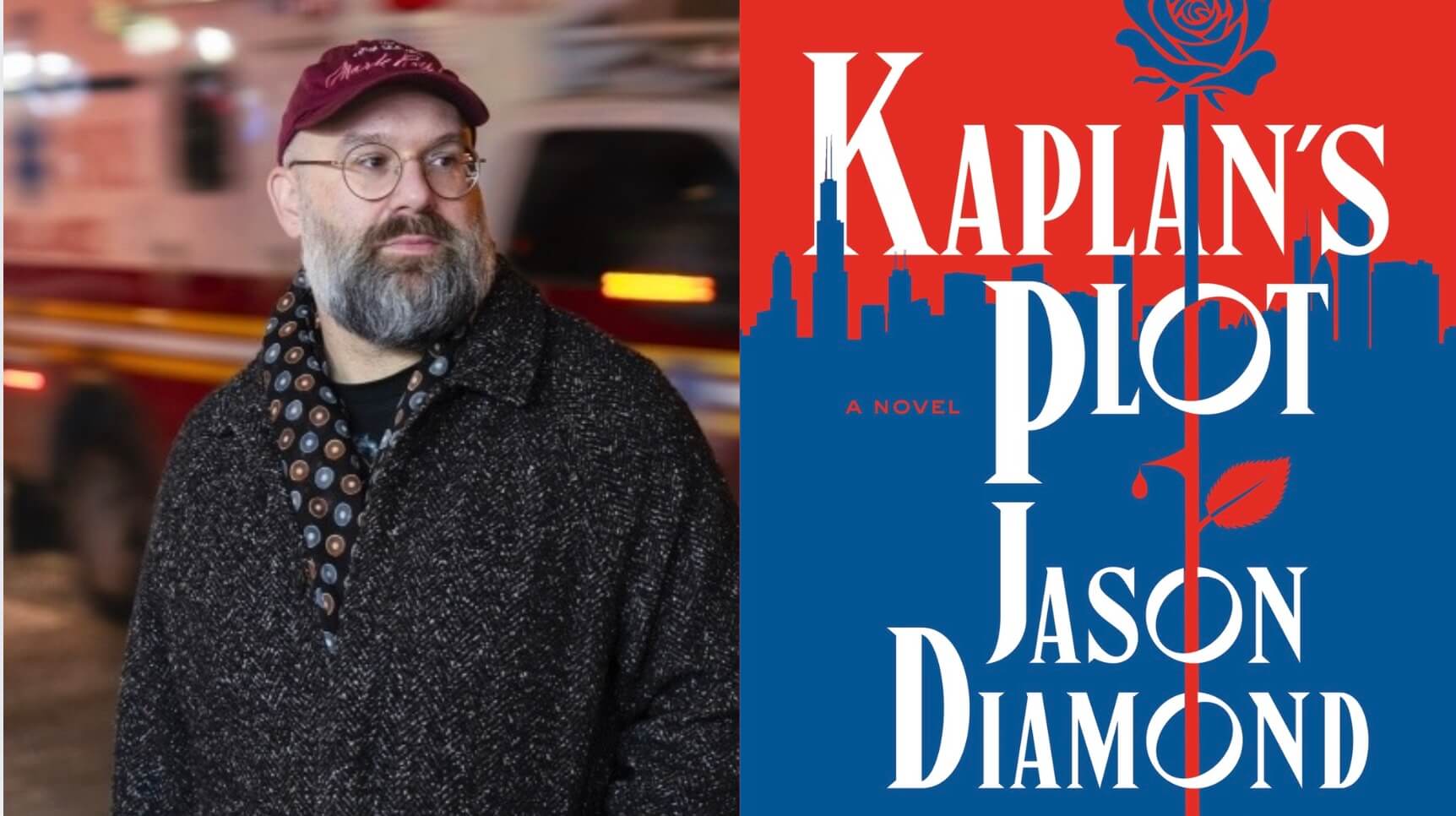
Reviewed by BERNIE BELLAN I had been searching for a new book this summer that would be of particular interest to Jewish Post readers when I came across the title of a new book that had yet to be released, called “Kaplan’s Plot.” It had received quite a bit of buzz on a number of websites that spotlight books that have – at least in part – a Jewish theme, although it still had not been reviewed when I first read about it.
The plot of the book, as it was described in those initial previews, certainly appealed to me, as it was said to combine a story about a Jewish gangster in Chicago in the early part of the 20th century with a modern day story about a man whose life had come completely unravelled and who was forced to return to Chicago to live with his dying mother.
I’ve been a fan of Jewish gangster stories for years, especially ones written by our own Allan Levine – and I’d often published stories about real life Jewish gangsters – or Jewish gangster fighters – as the case may be, in the pages of The Jewish Post & News (also on jewishpostandnews.ca).
Last year, for instance, I wrote a review of a book called “The Incorruptibles,” about efforts by law-abiding Jews in New York City in the early part of the 20th century to fight corruption. You can read my review here: “The Incorruptibles.”
Also, in the past I’ve run stories about Jewish underworld figures who either lived in Winnipeg or had a strong Winnipeg connection. One of the most popular stories ever to appear on our website, for instance (and which is still being widely viewed), is one that was written by Bill Redekopp – a former writer for the Free Press, who had profiled a fascinating Winnipeg bootlegger by the name of Bill Wolchock in his book, “Crimes of the Century – Manitoba’s Most Notorious True Crimes.” You can read Redekopp’s story about Wolchock at “Bill Wolchock.”
Another story that garnered quite a bit of attention when it was first published was Martin Zeilig’s story about Winnipeg-born Al Smiley, which appeared in the March 29, 2017 issue of The Jewish Post & News. The most interesting tidibt in Martin’s story was that Smiley was was sitting beside the notorious Benjamin “Bugsy” Siegel when Siegel was murdered in 1947. That story doesn’t appear as a stand-alone story on our website, but you can find it by downloading the entire March 29, 2017 issue by entering a search through our “Search archive” link for Al Smiley.
One more story that dealt with Manitoba Jewish gangsters (and which also referenced the Bill Wolchock story) was one I wrote in 2023 titled “A deep dive into the lives of some shadier members of our community.” In that story I wrote about a book that was about to be published titled “Jukebox Empire: The Mob and the Dark Side of the American Dream.” It was the story of Wolf Rabin (born William “Wolfe” Rabinovitch), written by his nephew, David Rabinovitch.
All this serves as a very long winded preamble to a review of “Kaplan’s Plot.” I was somewhat disappointed to learn that the characters in the book are all fictitious, since the mobsters are so vividly drawn – although there are very brief references to real-life mobsters, including Al Capone, Meyer Lansky and Charles “Lucky” Luciano, that make you wonder whether some of the other mobsters might also have been real people.
According to information available about the author, Jason Diamond, this is his very first novel – a very impressive debut. He certainly brings to life a very nasty Chicago in the early part of the 20th century.
What makes what Diamond has written an even more admirable achievement is that the plot works both as a riveting mystery and as a thoughtful examination of a mother and son relationship.
The story alternates between a story set in modern day Chicago (in 2023) and another story that begins in Odesa in Ukraine in 1909, but soon moves to Chicago shortly thereafter.
At first, we read about a character by the name of Elijah Mendes, who has just returned to Chicago from the Bay area, where a business venture in which he was involved has collapsed. Elijah’s mother, Eve, is dying from cancer, but she certainly retains enough strength to carry on with quite a few activities – enabled by her constant puffing on a vape pen. Eve, it turns out, has been a very accomplished poetess during her life and, although she and her late husband Peter were financially quite comfortable, she scoffs at what she regards as Elijah’s obsession with material pursuits.
Eve doesn’t pay much attention to mundane day to day matters, including opening the mail, but when Elijah discovers a series of letters from something called the Hebrew Benevolent Society, his curiosity is piqued and he sets out do discover what those letters are all about.
The chapters alternate between modern and older Chicago, as we are introduced to the Kaplan brothers – Yitzhak and Solomon or, as they come to be known in America – Itz and Sol. The brothers have narrowly escaped a pogrom in Odesa when their parents were able to secure passage for them on a boat destined for Hamburg. Eventually they find themselves on a ship sailing to America, where they make the acquaintance of a character by the name of Hershey.
Hershey tells the boys that he can help them find a place to live in Chicago, where he introduces them to Avi who, it turns out, is a major figure in the Jewish underworld there.
Diamond provides a rich description of what life was like in Chicago back in the day when the city was divided among different ethnic groups who held sway over their own respective territories and when it was dangerous to cross over into the wrong part of town.
As the story develops, we learn that Elijah is actually the grandson of Itz Kaplan, but knows nothing about his grandfather’s very shady past – beyond having been told that he was a “businessman.” When he goes to the building housing the Hebrew Benevolent Society, however, he finds out that there is an entirely new aspect to his family’s past – which leads to his wanting to probe deeply into his family’s history.
Elijah’s own demons – including past drug addiction, a failed marriage, and a deep insecurity about his own ability to succeed in business, come to the fore, but his mother’s refusal to discuss her family’s history haunts him even further.
As the book moves in parallel tracks between two time periods we find out more about Itz Kaplan – and just how malevolent a character he was. And, at the same time as Elijah learns more about Itz, he begins to better understand why his relationship with his mother had gone off the rails.
The mystery of what happened to Itz’s brother, Sol, about whom Elijah had not even known had existed, figures into both stories – the one set in early 20th century Chicago, and the one set in modern Chicago, as Elijah tries to get his mother to open up about her family.
Jason Diamond provides wonderful descriptions of some of the minutiae of Jewish life back in the day when keeping kosher was an essential element of Jewish life. Sol, for instance, is a butcher (something that his father was as well back in Odesa) and maintains a rigid observance of all Jewish laws. He is fastidious about adhering to the quite complex details of butchering meat according to the laws of kashrut, for instance.
Itz, in contrast, who has been deeply emotionally scarred by what he saw happen during the pogrom in Odesa, is totally indifferent to Jewish laws. At the same time though, the reader might develop a grudging admiration for just how cleverly Itz is able to navigate the jungle of the Chicago underworld. That’s why I began this review by referring to other Jewish crime figures – all of whom existed. While we might be repelled by their behaviour, we are often fascinated by the cleverness they exhibited in maneuvering through the almost constant danger that manifested their lives. And – it was knowing that they were living on a knife’s edge that often seemed to motivate them as they stared danger in the face.
Ultimately, Diamond brings it all home. The mystery behind Eve’s family is solved and there is some closure to the relationship between Elijah and Eve.
A truly absorbing story – although just released in September, “Kaplan’s Plot” has already garnered many positive reviews. One review on Goodreads, I note however, says that the reviewer is sick of “mob stories.” I suppose it’s quite evident that I’m a big fan of mob stories that have a Jewish element and, if you are a fan of that genre then “Kaplan’s Plot” is sure to capture your fancy. I’m not sure I’d recommend it as a Chanukah gift for the grandchildren, however – unless one of your grandchildren has aspirations of becoming a mobster.
“Kaplan’s Plot”
by Jason Diamond
Flatiron Books
320 pages
Published September, 2025
Features
CAD Performance in 2025: Key Factors Behind Its Recovery

The CAD is clawing back lost ground. Discover what pushed the loonie down in 2024, what’s lifting it in 2025, and why its future still hangs in the balance.
2024 was a strange year for the loonie. If you are an active currency trader, a quick look at a CAD/USD price chart would have you nodding in agreement. Yes, the year started off strong, but as the months rolled by, it was obvious that something was wrong, especially as we neared the end of Q3. The reason for the downtrend was clear. Most people agreed that it was the tariff threats from Washington, rate cuts at home, and a volatile global economy that were being reflected in the currency markets. And for a while, the CAD was stuck in that losing streak, with some experts even suggesting that there was still more to come.
As the new year rolled around, it didn’t seem like anything had changed. But by mid-2025, quiet shifts had turned into a noticeable recovery, with the loonie gaining back significant ground against the greenback. So, in this piece, we’ll break down what really dragged the Canadian dollar lower in 2024, what’s fueling its recovery this year, and whether this rebound is going to hold steady.
Understanding What Happened in 2024
At the start of the year (2024), one U.S. dollar traded for about 1.35 CAD, which translates to one Canadian dollar being valued at roughly 74 cents U.S. It wasn’t anything special at the time, especially after the levels of inflation and volatility of 2023. Still, economists noted that these were the few key factors that kept the loonie afloat early in the year:
- The price of oil made a comeback. Crude prices firmed up early in the year, supporting Canada’s export earnings and adding a tailwind to the currency.
- Employment figures were solid. Job growth held up, and steady wage gains helped offset the pressure of higher borrowing costs.
- The BoC held a steady interest rate. After an aggressive round of rate hikes in 2023, policymakers looked ready to pause and let the economy cool gradually.
All of these factors were thought to have helped build confidence in the Canadian economy and by mid-2024, the loonie had edged up toward 76-77 cents U.S.
Late-Year Turbulence
Not a lot of people saw it, but as Q2 2024 unfolded, the CAD started to look unattractive to currency market investors. How? Well, it started when the Bank of Canada (BoC) started to signal its intention to cut interest rates. It gave its clearest sign to this on April 10, 2024 when the bank highlighted that inflation was slowing down and it was leaving the door open for rate cuts. This announcement changed market expectations almost overnight.
Eventually, the first cut came on June 5, 2024. The BoC lowered its benchmark rate by 25 basis points from 5% to 4.75%, becoming the first major G7 central bank to start easing.
From there, the pace picked up with rates being reduced four more times. The market’s reactions to these cuts were immediate. And any currency trader with a reliable forex trading app saw each one unfold live. The CAD began to lose altitude as the yield gap with the U.S. widened. With lower returns on Canadian assets, investors favored the greenback. Adding to the pressure, the Trump campaign’s 25% tariff threat in September ignited the fears of a trade war. Which led to traders quickly pricing in potential hits to exports and investment, sending sentiment lower.

The 2025 Comeback
The CAD started 2025 trading at around 67 cents U.S., with some days even seeing it flirt with the 66-cent mark. So, it was a common assumption in the currency traders’ community that 2024 might repeat itself. But something was different this time. Every day, the loonie was quietly clawing back much of the ground it lost during the previous year’s slump.
So, what was different this time? Well, experts believe the panic that gripped both retail and institutional traders through late 2024 began to fade. As positive economic data started to filter in, confidence slowly returned alongside a few key drivers. By midyear, analysts were already talking about a turnaround rather than just a recovery attempt. The CAD was trading in the 72-73-cent U.S. range, up solidly from its January lows, and here’s its current rate.
Major Factors Behind the CAD’s Recovery
So, what helped the CAD? Well, there were a few clear factors that came together to turn sentiment around and put the loonie back on steadier footing.
- U.S. Dollar Weakness
A softer U.S. dollar was one of the clearest tailwinds for the CAD in 2025. The weakening of the USD started occurring when investors started to pull back from U.S. assets as political tension, fiscal worries, and softer economic data piled up.
What drove it?
- Trade and political uncertainty: Tariff moves and Washington infighting rattled investor confidence.
- Fiscal strain: Deficit concerns eroded trust in U.S. financial stability.
- Fed policy shifts: With the Federal Reserve showing interest in cutting rates (and actually doing so on September 16), the yield advantage that once favored the dollar began to fade.
As investors reduced exposure to U.S. assets, capital rotated into other major currencies. The CAD, being liquid and commodity-linked, was one of the key beneficiaries, strengthening almost by default as the greenback lost ground.
- Diverging Monetary Policy
Monetary policy divergence became another major driver. The Bank of Canada held its policy rate steady near 2.75% through Q2 2025 before cutting in September, signaling confidence that inflation was cooling without stalling growth. Meanwhile, the U.S. Federal Reserve began easing monetary policy with its first rate cut in September 2025, responding to slowing growth and softer inflation. This divergence in pace and tone helped support the Canadian dollar’s rebound.
This narrowing interest rate gap mattered. And with Canada offering relatively higher yields, foreign investors found the loonie more attractive, especially compared to the softening U.S. dollar. For traders, the CAD started to look like a better carry trade than it had in over a year.
- Easing Tariff Fears
Another major psychological lift came from the fading of tariff risks. In the first half of 2025, Trump’s proposed 25% tariffs on Canadian goods lost traction as political attention shifted elsewhere. While some concerns still lingered, the immediate threat of a trade shock began to ease. Cross-border trade flows regained a bit of momentum, and markets started to price in a smoother path for Canadian exports. That renewed confidence played a key role in supporting the loonie’s recovery.
Can the Loonie Hold Its Ground?
As 2025 moves forward, the consensus among analysts is cautious but constructive. Most expect the Canadian dollar to trade in the 1.33-1.36 range against the U.S. dollar, a level that points to stability. The worst of 2024’s volatility seems to be behind it, but the loonie’s next moves will still depend on how the global story unfolds.

A Currency That Refused to Stay Down
The past two years have been anything but smooth for the CAD, but this move has proven one thing: resilience runs deep. After weathering policy shifts, tariff scares, and market pessimism, the loonie has managed to rebuild its footing in 2025. Its recovery hasn’t been dramatic. It was grounded in solid fundamentals and steady confidence. For traders, that’s a reminder that sentiment can turn just as fast as it fades.
Features
Statistical Volatility Models in Slot Mechanics: Extended Expert Analysis Informed by Pistolo Casino
Analytical reviews of slot volatility often reference ecosystems similar to those found at Pistolo casino. Within the gambling research community, volatility is understood not as a marketing attribute, but as a technical framework that shapes how digital slot systems distribute outcomes over time. Expanding on earlier overviews, this extended analysis examines the deeper mathematical logic behind volatility classes, as well as their implications for long-term behavioural modelling.
Volatility as a Mathematical Architecture
Slot volatility is commonly divided into high-, medium-, and low-risk models, yet this simplified categorisation hides the structural complexity underneath. Developers configure several layers of probability weighting, which include:
- Event Density Layers – Each slot contains multiple weighted segments representing minor, medium, and rare outcomes.
- Return Frequency Curves – These curves dictate how the distribution of payouts drifts around the long-term equilibrium.
- Reel Weighting Matrices – Symbol appearance probability is shaped not only by frequency but also by conditional dependencies within each reel strip.
Research drawing on examples parallel to Pistolo casino shows that modern slots increasingly use modular probability blocks, making outcome variance more flexible and more precisely adjustable during development.
Behavioural Interpretation of Volatility Signals
From a player analytics perspective, volatility modelling helps identify how different user groups respond to varying risk structures. High-volatility mechanics frequently attract users who seek extended tension cycles and the possibility of occasional strong outcomes, while low-volatility systems are associated with steady-state gameplay and longer average session times.
Analysts also examine “volatility fatigue,” a concept describing the moment when prolonged dry cycles reduce engagement. By tracking these patterns, researchers can map how changes in event spacing affect decision-making, bet sizing, and persistence.
Simulation Methodology for Evaluating Volatility Accuracy
Technical audits rely heavily on large-scale simulations—sometimes exceeding fifty million iterations — to verify that the modelled volatility aligns with theoretical expectations. Key indicators include:
- Hit rate stability across long sequences
- Distribution symmetry, ensuring outcomes do not drift into accidental bias
- Deviation corridors, which define acceptable ranges for short-term anomalies
- Return-to-player convergence, showing whether the model equilibrates over time
When discrepancies appear, developers may adjust symbol weighting, probability intervals, or feature-trigger frequency until the system reaches internal balance consistent with regulatory and mathematical demands.
Volatility’s Role in Market Diversity
Volatility modelling helps explain the substantial variety between slot titles. Instead of relying solely on themes or graphics, modern game design differentiates titles by emotional rhythm and progression speed. This technical approach has led to more deliberate pacing structures where reward cycles, anticipation building, and event clustering are calibrated through mathematical systems rather than subjective intuition.
Conclusion
Volatility remains one of the most precise and data-driven components of slot design. Its study provides insight into outcome diversity, behavioural responses, and long-term predictability. Research frameworks referencing platforms comparable to Pistolo Casino highlight how volatility models shape modern gambling environments through measurable probability engineering and large-scale simulation.


